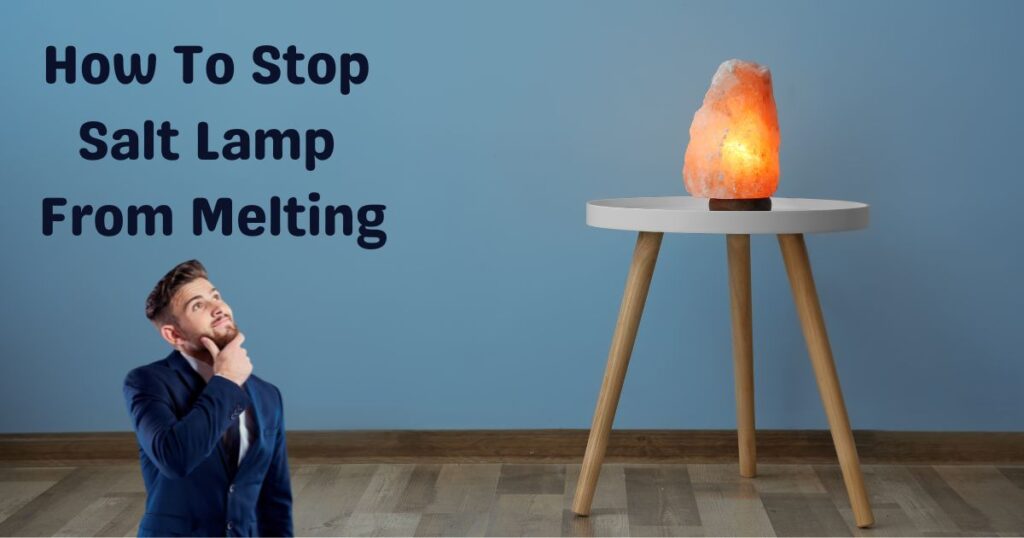In this article you will get information about the ways to stop salt lamp melting.
Himalayan salt lamps, revered for their exquisite beauty and purported wellness benefits, are crafted from natural pink salt crystal rocks native to regions near the Himalayan range. Meticulously handcrafted to retain their natural shape and allure, these lamps transform into radiant beacons when a light bulb is nestled within, emitting a warm pink glow that creates a distinct ambiance. The allure of the pinkish, amber-colored radiance, coupled with the calming ambiance, is a source of fascination for many enthusiasts.
Post Contents
Understanding Himalayan Salt Lamp Care and Maintenance:
As these unique lamps gain popularity, questions about proper care and maintenance abound. Many individuals seek answers to queries like, “How to care for Himalayan salt lamps?” and “How to prevent Himalayan salt lamp melting?” It is essential to delve into the intricacies of these questions to ensure the longevity and quality of these decorative and purportedly health-enhancing items.
Why Do Himalayan Salt Lamps Melt?
The key to comprehending the phenomenon of salt lamp melting or leaking lies in the hygroscopic nature of salt. Salt has an inherent ability to absorb moisture from the surrounding environment. Analogous to the slight moisture accumulation in salt shakers during the summer months, Himalayan salt lamps, being hygroscopic, tend to gather moisture and become damp. This natural characteristic is not a flaw but an integral part of the salt’s composition. Himalayan salt lamps contribute to air purification by absorbing moisture, and this process manifests as sweating or leaking.
Effective Measures To Stop Salt Lamp Melting:
By following the below techniques you can able to stop salt lamp melting:
1. Continuous Illumination : Keeping the lamp on consistently, ideally for 24 hours a day or at least 16 hours daily, helps maintain the natural warmth of the salt crystal. This continuous illumination facilitates the evaporation of excess moisture, preventing the lamp from sweating or leaking. Importantly, the low energy consumption of salt lamp bulbs makes this practice cost-effective.
2. Placement in Dry Areas : Selecting a dry location for your salt lamp is crucial. Placing it in areas with high moisture levels, such as bathrooms, kitchens, basements, or laundry rooms, should be avoided to prevent excessive moisture absorption.
3. Appropriate Bulb Usage : Using the right bulb for your Himalayan salt lamp is essential. The heat generated by the bulb aids in drying out the salt crystal, reducing the likelihood of sweating.
4. Moisture Reduction in Surroundings : Taking steps to reduce overall moisture in the vicinity of the salt lamp can be beneficial. This can include using moisture absorbers or dehumidifiers in the room where the lamp is placed.
5. Regular Wiping : Periodically wiping down the lamp with a damp cloth is a simple yet effective practice. This helps remove any accumulated dust and contributes to the prevention of excessive sweating or leaking.
Top 5 Tips for Optimal Himalayan Salt Lamp Care:
Ensuring the longevity of your Himalayan salt lamp involves adhering to a set of guidelines:
1. Avoid Humid Environments: Refrain from placing your salt lamp in environments with high humidity levels, such as bathrooms and kitchens. Excessive moisture can lead to sweating.
2. No Direct Washing: Never wash your salt lamp directly with water or running water. Direct contact with water causes the salt to dissolve, affecting the integrity of the lamp.
3. Keep it Dry: Allowing your salt lamp to remain on for extended periods contributes to the absorption of excess moisture, keeping the lamp dry and prolonging its lifespan.
4. Use a Protective Base: Place your salt lamp on a suitable base, such as a place-mat or decorative dish. This prevents water dripping or leaking onto furniture, avoiding unsightly watermarks.
5. Moisture Absorber Usage: Introducing a moisture absorber in the same room as your pink salt lamp can contribute to an overall reduction in moisture, preventing potential leakage.
Cleaning Your Himalayan Salt Lamp:
While Himalayan salt possesses natural antibacterial properties and is inherently self-cleansing, occasional cleaning may be necessary to remove accumulated dust. The process is straightforward:
1. Switch off and Cool Down : Turn off the lamp and allow it to cool to room temperature before attempting to clean it.
2. Damp Cloth Wiping : Gently wipe the surface of the lamp with a damp microfiber cloth (not wet) or a lint-free cloth to eliminate dust or dirt. The rough surface of the salt calls for a careful cleaning approach.
3. Eliminate Excess Moisture : Switch the lamp back on after cleaning to eliminate any residual moisture and ensure the salt surface is thoroughly dried.
Proper Storage of Himalayan Salt Lamp:
When the need arises to store your Himalayan salt lamp for an extended period, follow these steps:
1. Remove Power Cord : Detach the power cord from the lamp.
2. Airtight Sealing : Place the power cord in an airtight plastic bag, ensuring a proper seal to prevent contact with ambient moisture.
3. Additional Protection : For added protection, consider wrapping the lamp in multiple layers of plastic bags or cling wrap. This thorough sealing ensures isolation from moisture during storage.
By adhering to these comprehensive care and maintenance guidelines, your Himalayan salt lamp can remain a cherished and you can able to stop salt lamp melting.
In conclusion, Himalayan salt lamps, with their captivating aesthetics and potential wellness benefits, are not merely decorative items but require thoughtful care to maximize their longevity. Understanding the hygroscopic nature of salt and implementing practical measures for prevention and maintenance are essential steps in preserving the beauty and functionality of these unique lamps.

